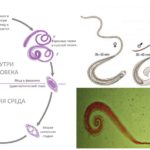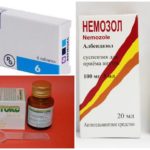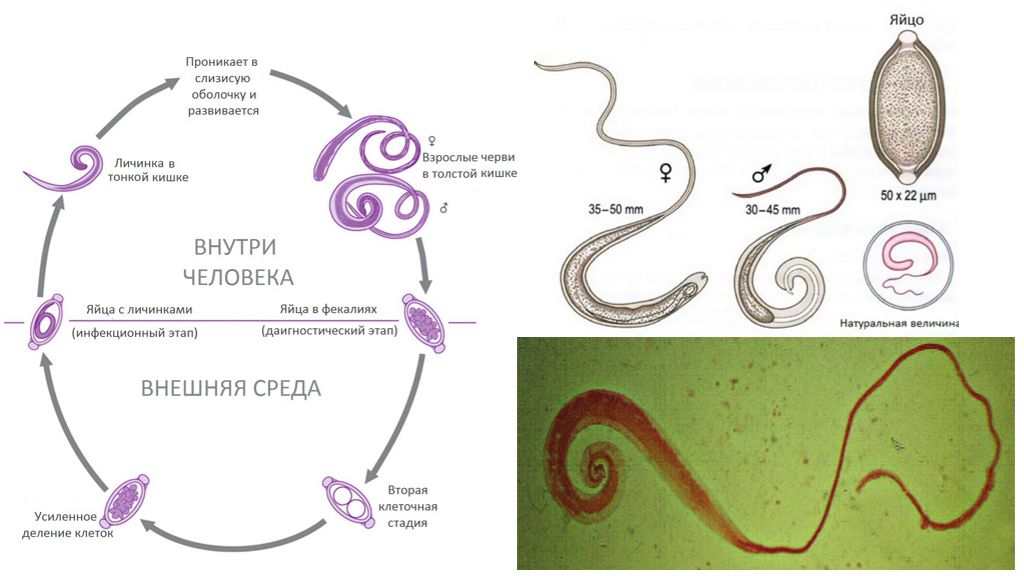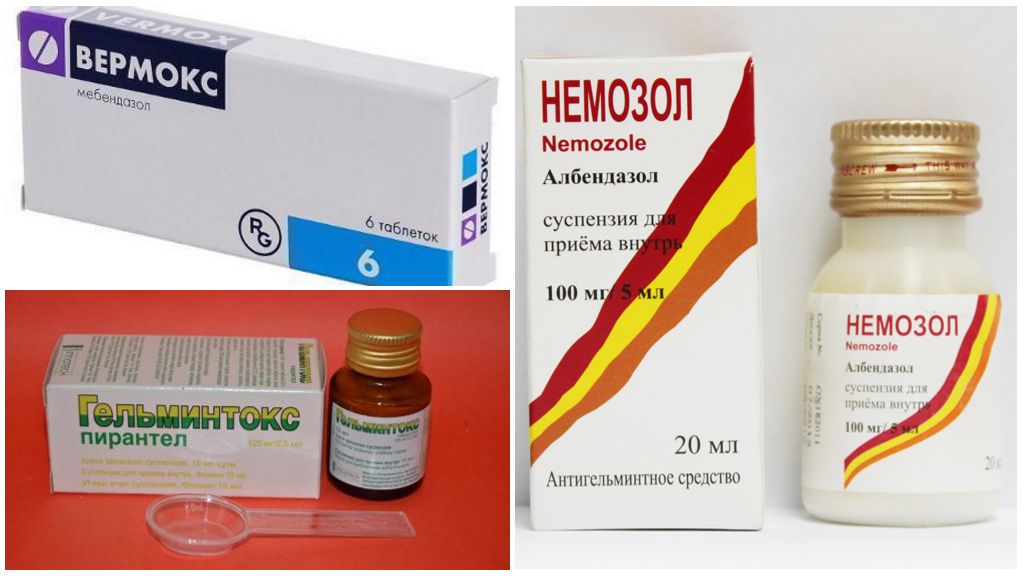Symptoms and treatment of human claws
Content
- The structure and appearance vlasoglav human
- Causes of parasite infection
- Symptoms of human presence
- Preparations for the treatment of human whipworm
Whipworm human got its name due to the peculiarities of the body structure. This worm is the causative agent of trichocephalosis.The parasite can exist for years at the expense of the owner, causing disturbances in the work of the digestive tract and the nervous system. With timely detection, you can get rid of it without consequences. In the case of prolonged invasion, a course of rehabilitation therapy will be required.
Structure and appearance
Best of all, you can see the human in the photo. Individuals belong to the class of roundworms and are called Trichuris trichiura. They have the structure of the body, corresponding to its name. The front of the helminth is so thin that it resembles hair. Toward the middle, the body begins to expand and has the same thickness to the end of the tail.
In the head region, which is not thicker than the filament, there is a long esophagus and oral cavity. At the wider end are internal organs for digestion and excretion of food, intestines and anus. In the female in this part is also located the uterus.
On an enlarged photo of the parasite, you can see that the worms are of unequal sizes. The difference is due to gender. The females are larger, the males are smaller. You can see what a whipworm looks like without a microscope.Males usually grow to 45 mm, and females can reach 55 mm in length. The color of worms can change at different periods of development, more often it is light gray.
The larvae or helminth eggs have an equally interesting shape. They are on average 50 to 26 µm in size and have an elongated shape in the form of a lemon with corky protuberances in the upper and lower vertical parts. The shell of the eggs of the whisker is multi-layered and durable, inside it is noticeable contents in the form of small balls or grains. The color varies from light brown to golden.
On a note!
The structure of a claw body is directly related to its way of parasitizing. With a thin end, it penetrates into the thickness of the intestinal wall of a person.
Peculiarities of parasitization and development scheme
Whipworm lives, feeds and multiplies only in the human body. It settles in the rectum, the upper sections of the large intestine and in the appendix. The parasite is introduced by the head into the intestinal membranes and sucks blood, nutrients and beneficial components.
The life cycle of whipworms, like other roundworms, goes in a circular pattern.The sexually mature female lays eggs, which are excreted during excrement into the external environment. In the soil or on the surrounding objects, they mature 21 days. During this period, a small spike in the form of a spear is formed in the larva in the slag egg. After falling into the human oral cavity, a live individual emerges from a ripe egg. With a spear-like stylet, she makes her way into the thickness of the small intestine and remains there until full maturity for several more days.
Then the helminth comes out of the shelter and moves to the side of the cecum, where it is again introduced into the thick shells and grows about 6 more weeks before the adult state. After that, the females are already mature and can live in other parts of the intestine and mate. A female individual lays no less than 2 thousand eggs in a man at a time.
On a note!
An intermediate host is not required to continue the life cycle of the whipworm. The parasite fully matures in the muscle tissues of the intestine, each time again and again traumatizing them when it is inserted and released. He can live and parasitize in a person for up to 5 or 7 years.
Mechanism and ways of infection
It is possible to get infected with a whipworm by a fecal-oral route. Eggs of parasites should get into the mouth and preferably with a larva ready for penetration into the intestinal wall. Given the fecundity of females, there is no shortage of such specimens in the focus of infection. The parasite enters the human body due to:
- eating poorly washed or dirty vegetables, fruits, berries;
- non-compliance with sanitary rules;
- drinking water infected by encapsulated larvae of clawing;
- habit biting nails and pencil ends;
- inadequate handling of hands after using the toilet, contact with animals, or after working in the garden.
Toddlers can get infected by licking dirty toys in the sandbox or by sucking fingers.
Important!
The parasite whipworm does not penetrate into the human body independently, its eggs enter the mouth only with the help of their own hands and through the water.
Forms of the disease
Trichocephalosis caused by a whipworm can develop as an acute and chronic infection. There are several forms of the disease. They differ in severity and can go one into another.
| Form name | Features and symptoms |
|---|---|
| Compensated | The body copes with such an invasion on its own through an immune attack and thanks to a good defensive response. Such a course is more often observed when single eggs enter the mouth and is not accompanied by a bright clinic. |
| Subclinical | Diagnosed with moderate invasions. During the period of the active penetration of human larvae of the vasoglaw into the intestinal walls, patients may experience spastic abdominal pain. Many complain of recurrent tingling in the iliac region on the right. |
| Manifest | This form has a bright clinical picture and develops against the background of long-lasting and massive invasions. Parasites severely injure the intestinal wall and cause inflammation and bleeding. As it parasitizes, the whipworm sucks out all the nutrients from the muscular layer of the intestine that a person needs for normal life. |
| Complicated | It develops in the case of the course of trichuriasis against the background of an intestinal infection or other helminthic invasion. The prognosis in this case is unpredictable because of the rapid development of anemia and the general depletion of the body. |
Important!
Symptoms when infection with whipworm increases gradually and increases with the growth of parasites. Therefore, you should consult a doctor at the first signs of disorders of the digestive organs, especially if the pathological condition of a person is not associated with eating habits.
Clinical picture
Symptoms of human clawing depend on the stage of the disease and the form of the course. Clinical manifestations are usually associated with impaired digestive function, damage to the nervous system and nutritional deficiencies in the body. A person infected with a whipworm in the acute stage usually complains about:
- salivation;
- nausea and vomiting;
- impaired stool;
- increased flatulence in the intestines;
- abdominal pain, sometimes of uncertain location;
- lack of appetite;
- headaches;
- irritability;
- poor sleep;
- weakness.
With massive helminthiases in the stool may appear mucus, blood. The pains become acute in nature and are often mistaken for signs of an acute abdomen.
Important!
Symptoms and treatment during infection of a person with a whipworm directly depend on the diagnosed form and the presence of concomitant pathologies.
Complications
One of the ominous complications of parasitism of vasoglava is cachexia (losing weight) and loss of the rectum in humans due to prolonged attempts at false urge to defecate (tenesmus).
On the part of the central nervous system, complications are manifested by a sharp deterioration due to intoxication, fainting and the development of seizures. In some cases, parasitic appendicitis and intestinal obstruction are diagnosed.
With prolonged and systematic damage to the mucous membranes, ulcers, polyps and tissue necrosis can form in the intestine, followed by bleeding.
Diagnosis and methods of getting rid of the helminth
It is easy to identify the fact that a person has been infected with trichocephalosis, the main thing is to suspect the infection in time and contact a specialist. For diagnostic purposes, an analysis of feces on the eggs of the worm is prescribed. You must take it, in the absence of a positive result, up to 3 days in a row.
If no larvae are found, diagnostic sigmoidoscopy is performed. The study can detect not only signs of damage to the intestinal walls, but also often see adult individuals. Additionally, to clarify the diagnosis, a blood test is prescribed for eosinophils and hemoglobin.The ELISA method for detecting antibodies to trichocephalosis does not apply.
Important!
The treatment of human claysorum should deal with the doctor. Previously, the patient is prescribed a general examination to identify possible comorbidities and contraindications to the use of specific drugs. Modern parasite drugs have high efficacy and a short course of use.
| Drug name and active substance | Features of therapy |
|---|---|
| Vermox (mebendazole) | Vermox can be treated with 3 years. The dosage and course for children and adults is 100 mg in the morning and evening. In order to expel worms, you need to drink the medicine for 3 days. |
| Helmintox (Pyrantel) | Curing by swallowing Helmintox can be done by taking one pill once. The dose should be determined by the weight of the patient. For every kilogram of weight 10 mg of the drug. |
| Nemozol (Albendozol) | The average dose for adults and children over 2 years is 400 mg per day once. |
Preparations for worms are available on prescription. The cost of tablets based on mebendazole and pyrantel is on average 100 rubles for 6 pieces.For Nemozol will need to pay 160 rubles for 1 pill. In parallel with antiparasitic agents, doctors prescribe vitamins, immunomodulators, antiallergic drugs and drugs for symptomatic therapy according to indications.
Important!
The whipworm disease can be simultaneously diagnosed in several people in a family. Therefore, anthelmintic agents should be drunk by everyone living together, even in the absence of symptoms of infection.
Prevention
Prevent hit
eggs slag in the body under the force of each person. To do this, follow the basic rules of hygiene. Hands should be washed before each full meal and before just a snack. For the purposes of prophylaxis, it is also recommended to be careful when working with the earth and bathing in water. Vlasoglava larvae can even be in the forest, on berries and mushrooms. Therefore, when collecting natural gifts, one should not lose vigilance.
Conclusion
If parasitic whipworms in the human body, they will surely cause malfunctioning of organs and systems. The degree of negative impact will increase every day.Fighting worms must be timely, competently and with the help of specialists. To use folk remedies for helminths in mass invasions is useless and sometimes unsafe.













